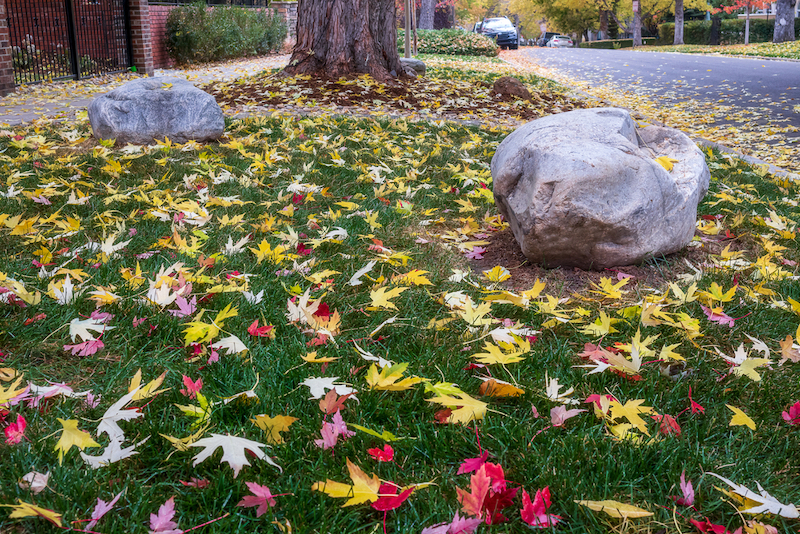Across the country, from New England to Colorado, destinations (and their tourism boards) tout their region’s seasonal color change to draw visitors. But what if the colors don’t change? Will the destructive effects of climate change — wildfires, droughts, storms and heat waves — also make the fall landscapes, the ones bursting with shades of red, yellow and orange, a thing of the past?
Although the impact of climate change on fall foliage isn’t fully understood yet, like other environmental conditions, the negative effects seem inevitable.
A quick science lesson: Chlorophyll concentrations in leaves (which give them their green hue) decrease as the days get shorter. This allows yellow and red pigments to appear instead, thanks to chemical compounds like carotenoids, which produce the orange, yellow and amber hues, and anthocyanins, which create red, purple and burgundy shades.
Typically, there isn’t much variation within regions from year to year. But temperature and moisture strongly affect the intensity of the color change. “A warm, wet spring, favorable summer weather and warm, sunny fall days with cool nights should produce the most brilliant autumn colors,” according to the U.S. Forest Service.
The widespread drought currently affecting parts of the U.S. can result in leaves turning brown and falling off much earlier than usual or only changing briefly with more muted hues. Climate change can also lead to a reorg of sorts among the trees, with some moving on up as the heat increases, which leads to other species being pushed out. This means we might start seeing different fall colors at different times.
Despite the wild weather patterns we’ve experienced as of late, you can still expect fairly normal fall foliage this year. In fact, the leaves have already started to change in some regions, including throughout much of the Rocky Mountains, West Virginia, northern New England and the Great Lakes region.
Want to know when to go leaf peeping? We’ve compiled a cheat sheet that covers the peak seasons for the U.S. regions:

New England and Mid-Atlantic Region
Some good news for parts of New England and the New York area: leaf colors tend to last longer after a wet summer. And thanks to a ton of tropical storm action, you’ve experienced a lot of rainfall this summer, although there was less precipitation south into the Mid-Atlantic region. Overall, though, expect autumn colors to be bright but probably brief, with the peak starting around the beginning of October (note that areas closer to Canada will probably peak sooner). By the second week of October, most of New England might be past its max, while the Mid-Atlantic will be reaching or be at its peak about that time.
Southeast
Because of drought conditions in the southern Appalachian Mountains, the color change may be brief in that area, reaching its peak around the second week of October. The rest of the region will experience similar timing as the Mid-Atlantic, with the far Southern states reaching peak around the end of October.
Midwest
Former meteorologist at the Mount Washington Observatory and Yankee Magazine’s resident fall foliage expert Jim Salge predicts that Wisconsin and Michigan will be ablaze with fall colors this year, with drought being a factor in Minnesota. To catch the color change, visit the upper Midwest region in late September through early October and the southern region in mid- to late October.

Mountain West
Because much of the Mountain West region (including Colorado, Wyoming and Montana) has been hot and dry, the color change in this area will probably happen early and quickly. We’re talking, like, now. Parts of Colorado, Wyoming and Montana are predicted to reach their peak within the next week or so. In late September, the rest of the region will be in prime leaf-peeping season, with early October expected to be post-peak.
Pacific Northwest
Thanks in part to crazy, outlier summer weather (Seattle ended up with more 100° days than Houston!), it’s hard to predict what the autumnal colors will look like, but according to the foliage map, early to mid-October is the best time to see the leaves in all their glory.
Looking for more info? Each year, the tourism site for the Smoky Mountain region offers an interactive tool that predicts the annual progressive changing of the leaves for the entire United States. It’s the go-to guide for planning out any fall foliage travels.




